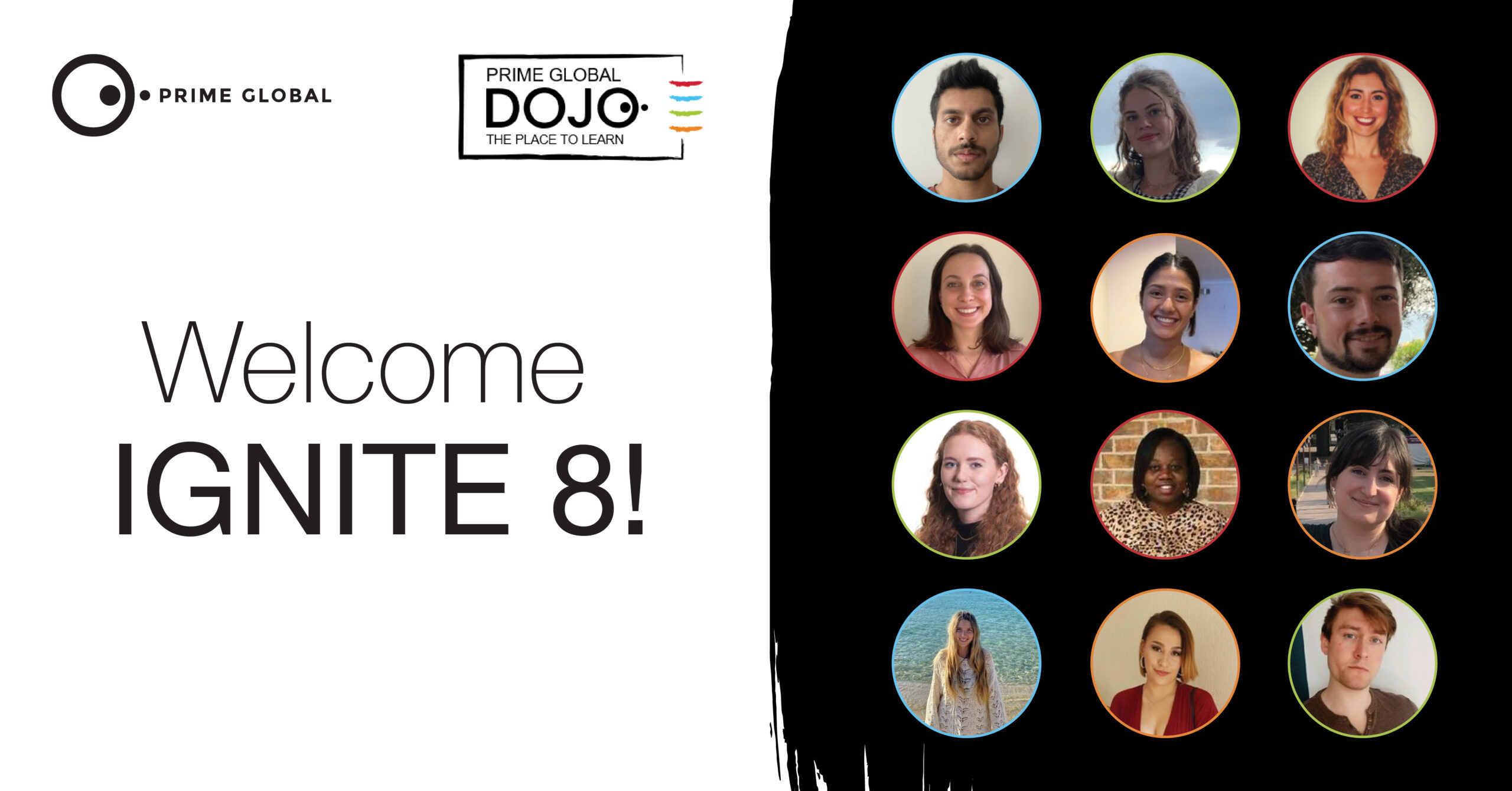This Pride Month, Prime Patient takes a close look at the health inequity faced by the transgender community, and what we can do about it.
Transgenderism is hugely misunderstood
People whose gender identity (i.e., ‘felt’ gender) differs from their sex recorded at birth are referred to as transgender (trans). Evidence including neuroimaging, genetic, and in utero hormonal data illustrates a physical basis for gender identity existing in its own right, distinguishable from “biological sex”. (1) (2) (3) (4). Accordingly, the incongruence between sex and gender that we describe as transgenderism is scientifically understood as a rational and biologically underpinned variation of human experience.
A common misconception is that transgenderism is now “coming out of nowhere” or “exploding”. In fact, identities beyond what is considered traditional understanding of sex and gender in the West have been observed and celebrated across a huge range of cultures around the globe throughout the history of humanity. (5) (6) (7) (8) (9) Nevertheless, the visibility of this community has recently increased due to numerous factors, (1) (10) including the rise of social media, blogs, and other content platforms, which have provided wide-ranging and reassuringly anonymous access to trans or trans-related communities and information. (11) (12) (13) The presence of numerous high-profile trans figures (such as Laverne Cox of Orange is the New Black) in the media has also boosted public awareness.
As a result of this heightened visibility, it has become easier for people to both correctly identify their feelings of gender incongruence and, for some, feel more comfortable sharing those feelings with less fear of stigma or rejection. (14) Sadly, despite increased visibility and the progress experienced by the transgender community, trans people continue to experience high levels of violence, discrimination, and poverty. (15)
 These social factors play a significant role in the health inequity experienced by the transgender population. While overt violence and verbal / policy-based hostility against trans people has direct impacts on their psychological and physical health, (16) living with chronic ‘minority stress’ and social marginalisation is also understood to contribute to disparities regarding, for example, cardiovascular health. (1) (17) (18)
These social factors play a significant role in the health inequity experienced by the transgender population. While overt violence and verbal / policy-based hostility against trans people has direct impacts on their psychological and physical health, (16) living with chronic ‘minority stress’ and social marginalisation is also understood to contribute to disparities regarding, for example, cardiovascular health. (1) (17) (18)
As a result of these issues, as well as major obstacles to obtaining compassionate, medically-endorsed gender-affirming care (e.g., via transition hormones), (19) 40% of transgender people report attempting suicide, compared to 1.6% of the general population. (21) (22) So harrowing are the levels of violence against and death by suicide within the transgender community that Transgender Day of Remembrance was established in 1999 and is honoured every year by the trans community and its allies. (23)
It is evident the trans community is strongly in need of healthcare system support. As powerful players in healthcare, pharmaceutical companies have the opportunity to help address this health inequity.
Trans-inclusive medical education is vital
A 2018 report by Stonewall revealed 62% of trans respondents had experienced a lack of understanding of specific trans health needs from healthcare professionals (45% of those reporting such experiences in the previous year alone). (24) These findings were similar to those of another 2018 study, which demonstrated that only 69% of surveyed physicians felt capable of providing routine care for transgender patients. (25) The situation is even worse in cancer care, with 80% of oncologists in a 2019 NYU study admitting they did not feel that they knew enough about treating trans people. (26)
So, one could expect trans people to be less trusting of their care providers and thus more likely to avoid care settings, and consequently experience poorer health outcomes. Indeed, evidence shows trans people do often avoid healthcare settings, (25) (27) and trans people living with cancer can be at particularly high risk of later diagnosis and worse outcomes due to healthcare access / safety barriers. (28) (To learn more about the cancer experiences of LGBTQIA+ survivors, check out this national survey supported by Bristol Myers Squibb.)
Whether intending to work in trans healthcare or not, physicians across a wide range of specialities may come across transgender patients, whether that be in directly relevant areas such as endocrinology (hormones) or in general healthcare. It is therefore important that HCPs are equipped with the necessary understanding to treat these patients with not only dignity and respect, but also confidence in treatment decisions. (29) (30)
By leveraging existing expertise in developing and disseminating medical education materials, pharmaceutical companies could make a difference by providing trans-inclusive informational resources for HCPs. A key starting point would be avoiding unnecessary, trans-exclusionary gendered language, e.g., referring to all breast cancer patients as women, as trans men (or other people assigned female at birth who do not (consistently) identify with either the male or female gender) can also develop breast cancer. This kind of basic adaptation can go a long way in alleviating the confusion, indecision, or other discomfort trans patients can face from even the most well-meaning HCPs. Furthermore, such adaptation encourages successful and trusted patient-HCP relationships, and therefore better health outcomes. (31) (32) (33)
Medical education should include guidance on safe prescribing
 Pharma could also help support the equitable care of transgender people by addressing a major barrier to clinical decision-making – HCPs’ lack of confidence in prescribing treatments for trans patients due to uncertainty of potential interactions with / influences of hormone treatments.
Pharma could also help support the equitable care of transgender people by addressing a major barrier to clinical decision-making – HCPs’ lack of confidence in prescribing treatments for trans patients due to uncertainty of potential interactions with / influences of hormone treatments.
While hormone therapies are prescribed “off-label” for gender-affirming therapy and pharmaceutical companies therefore cannot produce educational materials on this particular use, materials regarding medications unrelated to transitioning should include information on how hormonal differences in trans people (e.g., due to hormone therapy or certain surgeries) may affect the results / side effects of a medication or influence the dosage required. (20) (34) (35) Although dosages are habitually tweaked for pregnant people, partly due to hormonal differences pregnancy brings (and resultant changes to drug processing), such adjustments are not routinely made for transgender people, despite a similar need for tailored dosages due to hormonal factors. (20)
Dosage considerations also apply to trans people who have not undergone medical transition but are registered with their doctor as their identified gender. It is important that HCPs are aware of such patients’ transgender status; even without the influence of hormone therapies or surgeries, what is considered the correct dosage may be influenced by whether one is assigned male or female at birth due to differences in factors such as number of drug binding sites and relative amount of water in the body.
With readily available guidance on safe dosage and drug combinations for transgender people across the spectrums of transition (medical, social, and legal), HCPs will be better equipped to deliver equitable care to this population. Given current gaps in the literature, a focused research effort is needed to make this happen.
Clinical trials – research avenues
When making recommendations regarding dosage or the safety of treatment combinations, robust evidence must be generated to support any statements made. However, a huge data gap exists regarding trans health and healthcare. (36) This is partly because inclusion of transgender participants has not been explicitly permitted in study protocols, (37) and hormone treatments could potentially complicate (but not render impossible) interpretation of clinical trial data. Furthermore, the trans-specific health/healthcare research that does exist is often extremely limited in scope. (1)
 Hormone therapies used for gender-affirming care are both generic (off-patent) and prescribed off-label in this context. Thus, there is a lack of business incentive for pharmaceutical companies to research these products independently, as the investment required may be at odds with funding needs for researching and developing new treatments. However, there could be a case for investigating how hormone therapies may influence the effects and safety of prescribing additional, new drugs for needs separate to transition. It is widely documented that hormone therapies have a huge psychological benefit for transgender people (17) (38) and being unable to receive hormone therapies can be deeply distressing and even dangerous (e.g., by increasing risk of suicide or violent attacks due to no longer “passing” as their identified gender). (17) (29) (30) (38) Thus, it is critical to understand the interplay between hormone therapies and other treatments.
Hormone therapies used for gender-affirming care are both generic (off-patent) and prescribed off-label in this context. Thus, there is a lack of business incentive for pharmaceutical companies to research these products independently, as the investment required may be at odds with funding needs for researching and developing new treatments. However, there could be a case for investigating how hormone therapies may influence the effects and safety of prescribing additional, new drugs for needs separate to transition. It is widely documented that hormone therapies have a huge psychological benefit for transgender people (17) (38) and being unable to receive hormone therapies can be deeply distressing and even dangerous (e.g., by increasing risk of suicide or violent attacks due to no longer “passing” as their identified gender). (17) (29) (30) (38) Thus, it is critical to understand the interplay between hormone therapies and other treatments.
HIV care is an example of where Pharma could provide transformative clinical trial data on drug combinations for the trans population. Transgender women are, on average, at particularly high risk of contracting HIV, due to factors including involvement in sex work (e.g. due to discrimination from traditional employers), potential increased susceptibility to bleeding and infection in the genital region following gender-affirming surgery, and barriers to accessing HIV-preventative healthcare (pre-exposure prophylaxis (PrEP)). (39) For those trans women who can access PrEP, adherence and compliance may be compromised due to fears of unsafe interactions between the PrEP and their hormones, or how the treatment may impact their hormonal transition. (40) Thus, evidence-based HCP guidance and patient education on the safety (and indeed efficacy) of HIV prophylaxis in combination with hormone therapies is clearly needed.
 By embedding trans-specific sub-investigations into clinical trials for new treatments (i.e., those for which there is a business incentive to conduct research), Pharma could transform HCPs’ prescribing confidence and help ensure transgender patients are not put at greater risk than their cisgender (non-trans) peers when being treated with modern drugs. Furthermore, these findings could be translated across to people taking hormone replacement/blocking therapy to alleviate the effects of menopause or hormonal imbalances, for example. Such recognition of the value of assessing potential treatments in the context of sub-population needs is a great way to take patients’ wider needs into account and represents a step towards patient-centric drug development.
By embedding trans-specific sub-investigations into clinical trials for new treatments (i.e., those for which there is a business incentive to conduct research), Pharma could transform HCPs’ prescribing confidence and help ensure transgender patients are not put at greater risk than their cisgender (non-trans) peers when being treated with modern drugs. Furthermore, these findings could be translated across to people taking hormone replacement/blocking therapy to alleviate the effects of menopause or hormonal imbalances, for example. Such recognition of the value of assessing potential treatments in the context of sub-population needs is a great way to take patients’ wider needs into account and represents a step towards patient-centric drug development.
Clinical trials – best practice
 To conduct these important studies, transgender participants are crucial. Therefore, Pharma needs to ensure trial environments and teams are welcoming and inclusive so trans people actually enrol in the first place (and stay enrolled). A fantastic example of good industry practice can be seen from Parexel, a clinical research organisation. Through collaborating with the trans community, leveraging internal lived-experience expertise and holding a patient advisory meeting, Parexel were able to provide multiple recommendations. (37) These ranged from the importance of using preferred pronouns, which is important to convey respect and inclusion, (41) to how industry can build trust with the trans community.
To conduct these important studies, transgender participants are crucial. Therefore, Pharma needs to ensure trial environments and teams are welcoming and inclusive so trans people actually enrol in the first place (and stay enrolled). A fantastic example of good industry practice can be seen from Parexel, a clinical research organisation. Through collaborating with the trans community, leveraging internal lived-experience expertise and holding a patient advisory meeting, Parexel were able to provide multiple recommendations. (37) These ranged from the importance of using preferred pronouns, which is important to convey respect and inclusion, (41) to how industry can build trust with the trans community.
Pharma companies could also expand clinical trial eligibility criteria to include trans people. For example, a trans man who is legally registered as male, but experiences “women’s health” conditions, would not necessarily feel able to apply for / be accepted into a clinical trial for treatment of conditions associated with their sex assigned at birth, such as ovarian cancer. In the case of trans people who have not received hormonal therapies, the absence of transition-related hormonal influences would prevent any potential complication of trial data interpretation. Adding nuance to clinical trial eligibility criteria therefore has significant potential to help ensure transgender people have the same treatment access as their non-trans peers. By fostering inclusive environments, Pharma companies can not only conduct “life-altering” inclusive clinical trials, (37) but also protect against losing revenue as a result of insufficient trial recruitment and/or retention.

Pharma can also learn from the world of academic research. In 2021, researchers from Harvard and other institutions published the results of a study assessing barriers and facilitators to participation of transgender patients in clinical research. (17) The numerous recommendations presented included: using social media to recruit trial participants, given many trans people cannot access health centres (through which recruitment is often attempted); involving trans individuals in study planning, development, data analysis, etc. rather than advisory boards alone; and building trust, for example through the inclusion of transgender people on research teams, as lack of trans research staff was reported to contribute to participant scepticism about how the research (or indeed the trans community) may be valued by the researchers.
A fantastic example of transferring these insights to industry research comes from Merck (in collaboration with Janssen and Johnson & Johnson), who in 2021 announced a partnership with National Medical Fellowships to “help expand the pool of minority principal investigators”. (42) While this program is focused on racial and ethnic diversity, the rationale for actively facilitating diversity within research teams – that “one of the key barriers to achieving clinical trial diversity is the shortage of suitably qualified investigators in underrepresented communities” – transfers beautifully to transgender contexts.
 Finally, it is vital to consider the importance of patient-facing materials when conveying and promoting an inclusive trial environment. (43) Tweaks such as referring to cervical cancer as a condition affecting “anyone with a cervix” (with a brief explainer of who this includes if deemed necessary), and including photos of and perspectives from trans patients, can mean the difference between trans people feeling seen and welcomed, or invisible and excluded. While such linguistic alterations may take a bit of getting used to, the aforementioned benefits far outweigh this minor inconvenience. Furthermore, normalising trans inclusion can demystify and humanise this hugely misunderstood population for those who are relatively unfamiliar with the trans community, thus helping to disempower fearmongering. To ensure language, images, and topics are representative and appropriate, developing such materials in collaboration with trans patient advocates is hugely important.
Finally, it is vital to consider the importance of patient-facing materials when conveying and promoting an inclusive trial environment. (43) Tweaks such as referring to cervical cancer as a condition affecting “anyone with a cervix” (with a brief explainer of who this includes if deemed necessary), and including photos of and perspectives from trans patients, can mean the difference between trans people feeling seen and welcomed, or invisible and excluded. While such linguistic alterations may take a bit of getting used to, the aforementioned benefits far outweigh this minor inconvenience. Furthermore, normalising trans inclusion can demystify and humanise this hugely misunderstood population for those who are relatively unfamiliar with the trans community, thus helping to disempower fearmongering. To ensure language, images, and topics are representative and appropriate, developing such materials in collaboration with trans patient advocates is hugely important.
Conclusion
From clinical trials to medical education, trans-inclusive Pharma practice can lead to not only medical progress, but societal advances also. While the challenges faced by the transgender community are vast, pharmaceutical companies have opportunities to leverage existing expertise and structures to help effect a systemic transformation in trans health equity and patient centricity – a change which is not only crucial, but also incredibly exciting.
Recommended reading: Stonewall | The truth about trans
For more information, get in touch with the Prime Patient team via PatientEngagement@primeglobalpeople.com
References
- Safer J. Research gaps in medical treatment of transgender/nonbinary people. Journal of Clinical Investigation. 2021;131(4).
- Endocrine Society. Transgender Health [Internet]. Endocrine.org. 2020. Available from: https://www.endocrine.org/advocacy/position-statements/transgender-health
- Saraswat A, Weinand J, Safer J. Evidence Supporting the Biologic Nature of Gender Identity. Endocrine Practice. 2015;21(2):199-204.
- Gene variants provide insight into brain, body incongruence in transgender [Internet]. Science Daily. 2020. Available from: https://www.sciencedaily.com/releases/2020/02/200205084203.htm
- Hartemann G. Stop Erasing Transgender Stories From History [Internet]. SAPIENS. 2021. Available from: https://www.sapiens.org/archaeology/transgender-people-exist-in-history/
- Archaeologists for Trans Liberation [Internet]. Anthodendum. 2021. Available from: https://anthrodendum.org/2021/08/06/archaeologists-for-trans-liberation/
- David A. Ancient Civilization in Iran Recognized Transgender People 3,000 Years Ago, Study Suggests [Internet]. Haaretz.com. 2018. Available from: https://www.haaretz.com/archaeology/2018-12-30/ty-article-magazine/.premium/ancient-civilization-in-iran-recognized-transgender-people-study-suggests/0000017f-e0fc-d7b2-a77f-e3ffb5fb0000
- Transgender history – Wikipedia [Internet]. En.wikipedia.org. 2022. Available from: https://en.wikipedia.org/wiki/Transgender_history
- Kravitz M. The Gender Binary Is a Tool of White Supremacy [Internet]. Medium. 2020. Available from: https://aninjusticemag.com/the-gender-binary-is-a-tool-of-white-supremacy-db89d0bc9044
- Martens A. Transgender People Have Always Existed [Internet]. ACLU of Ohio. 2016. Available from: https://www.acluohio.org/en/news/transgender-people-have-always-existed
- Lehr N. What’s behind the rising profile of transgender kids? 3 essential reads [Internet]. The Conversation. 2021. Available from: https://theconversation.com/whats-behind-the-rising-profile-of-transgender-kids-3-essential-reads-161962
- Schmidt S. 1 in 6 Gen Z adults are LGBT. And this number could continue to grow. [Internet]. The Washington Post. 2021. Available from: https://www.washingtonpost.com/dc-md-va/2021/02/24/gen-z-lgbt/
- Burns K. The internet made trans people visible. It also left them more vulnerable. [Internet]. Vox. 2019. Available from: https://www.vox.com/identities/2019/12/27/21028342/trans-visibility-backlash-internet-2010
- Is being trans a new thing? [Internet]. TransHub. Available from: https://www.transhub.org.au/101/is-trans-new
- GLAAD Media Reference Guide – Transgender People [Internet]. GLAAD. Available from: https://www.glaad.org/reference/transgender
- Grant J, Mottet L, Tanis J. National Transgender Discrimination Survey Report on Health and Health Care [Internet]. 2010. Available from: https://cancer-network.org/wp-content/uploads/2017/02/National_Transgender_Discrimination_Survey_Report_on_health_and_health_care.pdf
- Asquith A, Sava L, Harris A, Radix A, Pardee D, Reisner S. Patient-centered practices for engaging transgender and gender diverse patients in clinical research studies. BMC Medical Research Methodology. 2021;21(1).
- Burgess C, Batchelder A, Sloan C, Ieong M, Streed C. Impact of the COVID-19 pandemic on transgender and gender diverse health care. The Lancet Diabetes & Endocrinology. 2021;9(11):729-731.
- Health Care Providers, Experts and LGBTQ+ Rights Advocates Urge Ohio Lawmakers to Protect Access to Health Care for All Young People in Response to HB 454 [Internet]. ACLU of Ohio. 2022. Available from: https://www.acluohio.org/en/press-releases/health-care-providers-experts-and-lgbtq-rights-advocates-urge-ohio-lawmakers-protect
- Gorvett Z. Why transgender people are ignored by modern medicine [Internet]. BBC. 2020. Available from: https://www.bbc.com/future/article/20200814-why-our-medical-systems-are-ignorihttps://www.bbc.com/future/article/20200814-why-our-medical-systems-are-ignoring-transgender-peopleng-transgender-people
- Transgender FAQ [Internet]. GLAAD. Available from: https://www.glaad.org/transgender/transfaq
- Vos Macdonald J. Providing Healthcare to Transgender Patients. Drug Topics. 2019;163(10).
- Transgender Day of Remembrance [Internet]. GLAAD. Available from: https://www.glaad.org/tdor
- Bachmann C, Gooch B. LGBT in Britain | Health Report [Internet]. Stonewall; 2022. Available from: https://www.stonewall.org.uk/system/files/lgbt_in_britain_health.pdf
- Shires D, Stroumsa D, Jaffee K, Woodford M. Primary Care Clinicians’ Willingness to Care for Transgender Patients. The Annals of Family Medicine. 2018;16(6):555-558.
- Survey Questions Cancer Doctors’ Awareness of LGBTQ Issues [Internet]. NYU Langone News. 2019. Available from: https://nyulangone.org/news/survey-questions-cancer-doctors-awareness-lgbtq-issues
- Gruberg S, Halpin J, Mahowald L. The State of the LGBTQ Community in 2020. Center for American Progress; 2020.
- National LGBT Cancer Network Out: The National Cancer Survey [Internet]. Cancer-network.org. Available from: https://cancer-network.org/out-the-national-cancer-survey/#about
- Caring for Transgender Patients: An Evolving Story of Learning and Respect [Internet]. Memorial Sloan Kettering Cancer Center. 2021. Available from: https://www.mskcc.org/news/caring-transgender-patients-evolving-story-learning-and-respect
- National LGBT Cancer Network TRANSforming Cancer [Internet]. Cancer-network.org. Available from: https://cancer-network.org/transgender-and-gender-non-conforming-care/
- Sallans R. Lessons from a Transgender Patient for Health Care Professionals. AMA Journal of Ethics. 2016;18(11):1139-1146.
- Willo J. Why gender identity training can improve the lives of trans people using NHS services [Internet]. NHS Confederation. 2021 [cited 17 June 2022]. Available from: https://www.nhsconfed.org/articles/why-gender-identity-training-can-improve-lives-trans-people-using-nhs-services
- Olaisen R, Schluchter M, Flocke S, Smyth K, Koroukian S, Stange K. Assessing the Longitudinal Impact of Physician-Patient Relationship on Functional Health. The Annals of Family Medicine. 2020;18(5):422-429.
- Lennie Y, Leareng K, Evered L. Perioperative considerations for transgender women undergoing routine surgery: a narrative review. British Journal of Anaesthesia. 2020;124(6):702-711.
- Webb A, McManus D, Rouse G, Vonderheyde R, Topal J. Implications for medication dosing for transgender patients: A review of the literature and recommendations for pharmacists. American Journal of Health-System Pharmacy. 2020;77(6):427-433.
- Warrender E. Is UK healthcare still creating barriers for transgender people? [Internet]. Open Access Government. 2021 [cited 17 June 2022]. Available from: https://www.openaccessgovernment.org/uk-healthcare-transgender/119311/
- Daley M. Working Towards A More Inclusive Environment: Transgender & Non-Binary Participants in Clinical Research [Internet]. Center for Information & Study on Clinical Research Participation. 2022 [cited 17 June 2022]. Available from: https://www.ciscrp.org/working-towards-a-more-inclusive-environment-transgender-non-binary-participants-in-clinical-research/?utm_source=rss&utm_medium=rss&utm_campaign=working-towards-a-more-inclusive-environment-transgender-non-binary-participants-in-clinical-research
- Heylens G, Verroken C, De Cock S, T’Sjoen G, De Cuypere G. Effects of Different Steps in Gender Reassignment Therapy on Psychopathology: A Prospective Study of Persons with a Gender Identity Disorder. The Journal of Sexual Medicine. 2014;11(1):119-126.
- Santhakumar S. Why are transgender women at a higher risk of HIV? [Internet]. Medicalnewstoday.com. 2021 [cited 17 June 2022]. Available from: https://www.medicalnewstoday.com/articles/hiv-in-transgender-women#higher-risk
- Cirrincione L, Podany A, Havens J, Bares S, Dyavar S, Gwon Y et al. Plasma and intracellular pharmacokinetics of tenofovir disoproxil fumarate and emtricitabine in transgender women receiving feminizing hormone therapy. Journal of Antimicrobial Chemotherapy. 2020;75(5):1242-1249.
- What Are Pronouns? Why Do They Matter? [Internet]. Pronouns.org. [cited 17 June 2022]. Available from: https://pronouns.org/what-and-why
- We’re training more minority investigators to help improve diversity in clinical trials – Merck.com [Internet]. Merck.com. 2021 [cited 17 June 2022]. Available from: https://www.merck.com/stories/were-training-more-minority-investigators-to-help-improve-diversity-in-clinical-trials/
- McNair L. Making Clinical Research Inclusive: Strategies to Include the LGBTQIA+ Community in Research Trials – WCG IRB [Internet]. WCG IRB. [cited 17 June 2022]. Available from: https://www.wcgirb.com/insights/making-clinical-research-inclusive-strategies-to-include-the-lgbtqia-community-in-research-trials/




